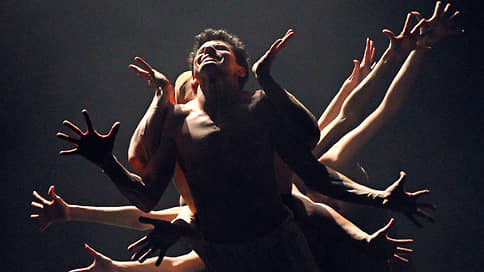The premiere of the ballet “Milligan’s Personalities” staged by Oleg Gabyshev took place in Moscow
[ad_1]

The premiere of the two-act ballet “Milligan’s Personalities” staged by Oleg Gabyshev took place in Moscow. The role of criminal Billy Milligan with multiple personality disorder was played by Oleg Ivenko, the premier of the Tatar Opera and Ballet Theater and producer of the project, which was first shown in Kazan last November at the StagePlatforma festival. About the Moscow premiere – Tatiana Kuznetsova.
Dancer Oleg Ivenko, known to the general public for his role as young Nureyev in Ralph Fiennes’ film The White Raven, turned out to be not only a capable actor, but also a talented producer: Milligan’s Personalities is his own project. Even during the time of Covid idleness, the dancer held a casting among choreographers, found a composer, actors, artists – as a result, “Milligan’s Personalities” was born.
The music was composed by Elmir Nizamov (the soundtrack was recorded by the orchestra of the Tatar Opera and Ballet Theater); a debutant in ballet, he used a variety of models – from Piazzolla to Max Richter, providing the score with danceable variety and “cinematography”. Artist Elisey Shepelev reproduced on stage a completely realistic corner of a room with a large sofa, under the back of which the “personalities” of the main character deftly disappear, and crowds of shadows loom behind the walls. In the second act, a blinding light occasionally shines from behind the quilted wall of the hospital room, and the hands of ghosts reach out from its cracks, tormenting Billy’s sick mind.
The idea of staging a play about the legendary American criminal, the hero of books, TV series and research, came to the mind of choreographer Oleg Gabyshev. The story of Milligan, acquitted by the court, in whose mind, according to psychiatrists, lived 24 personalities of different gender, age, nationality and intelligence, would allow the customer – Oleg Ivenko – to appear in many guises. In the ballet, however, the hero turned out to be a whole person, although lonely and suffering, and his alter ego was embodied in four characters: a boy, a girl, an athlete and a rogue. This whole company finished off the drunken rapist stepfather by hanging him from a telephone cord (the “thriller ballet” takes place in the 1970s). In the second act, the hero is still visited by his “multiple personalities,” but a new one has been added to them, similar to a “doctor” who invigorates herself with injections into a vein.
“The Thriller Ballet” is accessible, edifying and decent – there are no special perversions in it. The drunken stepfather beats the young man in vain – it is clear that this will not end well. Ivenko’s hero holds his head, trembles slightly, shrinks into a ball and tries to hang himself with a telephone cord – it’s clear that he is dangerously ill. One-time big jumps such as complicated revoltadas and transformed sodebasks, commendably invented by the choreographer, scream out the outbursts of his despair. The fact that the characters who appear to Billy in turn are actually himself in other forms is evidenced by the same movements at the beginning of each contact. Two “personalities” – the mighty Ranger (a wonderfully muscular Wagner de Carvalho) and the fidgety Alain (excellent work by the soloist of the Stanislavski Music Theater Georgi Smilevski Jr.) – got each variation, the gentle Adelana (the modestly erased Dina Andronova) – a soothing adagio with a number of sensible invented supports.
The second – sick leave – act does not bring anything new: the hero continues to suffer on a pile of mattresses, the “personalities” are increasingly dancing in sync. The main intrigue is held by the “doctor” (the emphatically harsh Olesya Pichugina). However, in terms of plasticity, there is no intrigue: the movements of the new character are authoritarian-angular (batmans of all sorts predominate) and monotonously commanding (which is emphasized by the arms extended at the elbows and the stable second position on the plié). In the adagio, the “doctor’s wife” dominates – she presses on the broken Billy even in the supports. She drives other personalities behind the soft wall of the chamber; and at the end of the performance, Billy, dressed in pajamas, bursts into demonic laughter in the face of the new doctor with a Chekhovian beard, finally pushing the timid hero off the stage. Overall, the ballet is not tiring, but it would not have lost anything significant if it had ended after the first act.
Choreographer Oleg Gabyshev staged “Billy Milligan” as one would expect from a wonderful artist and long-time premier of the troupe, Boris Eifman. I allowed all the soloists to “speak out”, trying to highlight their strengths. I came up with fresh jumps and a couple of unused combinations. I made the ballet numbers contrasting and came up with several self-playing finds, like a long telephone cord entangling the characters with bloody guts. He turned the artists to face the hall, as if in a mirror, so that their active facial expressions were visible and understandable to the audience. Raised the scale of emotions to the limit. The result was “Eifman-lite” – without heart-rending supports, split breaks and large-caliber pathos. And, judging by the almost half-century success of the standard, its follower is on the right track.
[ad_2]
Source link






